Climate
Glacier Marriage: Gilgit–Baltistan’s story of tying untraditional knots to mitigate the effects of Climate Change
Published
12 months agoon
By
Imran Ali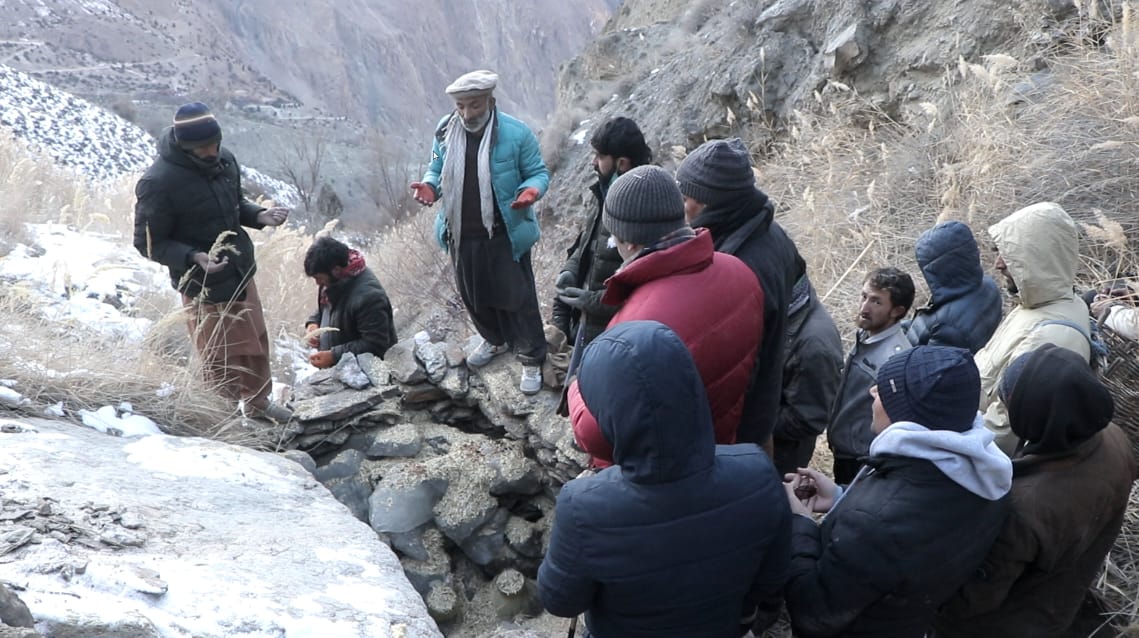
“Before that (grafting glacier) water was not available even for drinking. We used to pray Salah through Tayammum. Due to the grafted glacier, a lot of snow has accumulated there (pointing towards the glacier). The glacier is now 52 feet, Alhamdulillah. Look at this water, now we can perform ablution and pray easily”.
A native of Balghar valley explained this while pointing toward an artificially cultivated glacier.
Gilgit-Baltistan is home to the third-largest ice reserves after the Polar Regions. More than 5000 glaciers ranging from a few tens of meters to more than 70 km long are found across this region. Still, the region lacks water due to the slow melting of these glaciers. Availability of water has been a big concern for local communities. Apart from being the host of the largest glaciers on the globe, Gilgit Baltistan also has numerous cold deserts. These deserts face water shortages throughout the year. To cope with the water shortage, the locals developed a technique of grafting glaciers artificially.
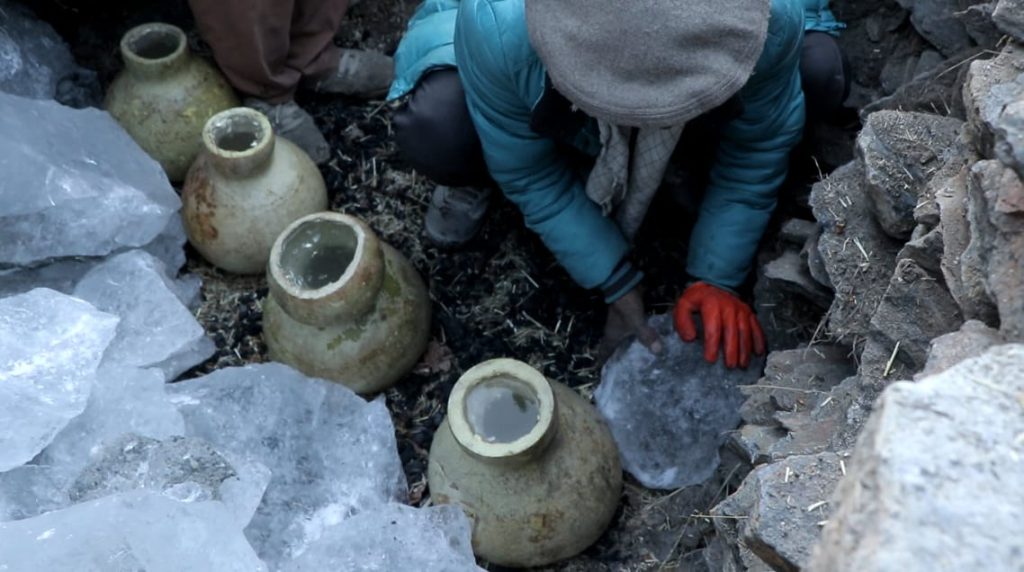
History of Glacier Marriage
“There was a mountain pass connecting Baltistan to Kashgar (China). People from Kashgar used to come on raids to Baltistan killing and plundering. One day a woman, who had become a widow after her husband was killed by Kashgaris was approached by a Sufi mystic, Ameer Kabir Syed Ali Hamadani when he heard about her mourning. Syed Ali taught her how to grow glaciers to protect themselves from the attacks of enemies. She then followed his advice and grew this Glacier”.
A native of Kondus valley narrates this story about the Kondos glacier.
The art of glacier growing is an old practice that the people of the Himalayan region have been conducting for centuries. This practice has been transferred from generation to generation through oral traditions. The elders narrated that their ancestors could mark several such reared glaciers in various places of Baltistan, which they have forgotten now. Some cultivators associate it with the Sufi mystic, Syed Ali Hamdani, others claim that it’s older than 1000 years, the first westerner to describe this technique was Lieutenant David Lockhart Robertson, who wrote about it in the 1920s.
According to local traditions, glaciers are also attributed as living beings and grey-colored glaciers are considered male glaciers while white-colored glaciers are identified as female glaciers.
A verb in Balti called ‘gang xso’ refers to the activities whereby humans encourage the growth of glaciers. ‘Gang’ here refers to ice or glaciers, while ‘xso’ refers to ‘growing’. In Shina, a similar term for glacier growing is found in ‘gamok sanoke’, ‘Gamok’ translates as ‘glacier’, while ‘sanoke’ translates to ‘making’.
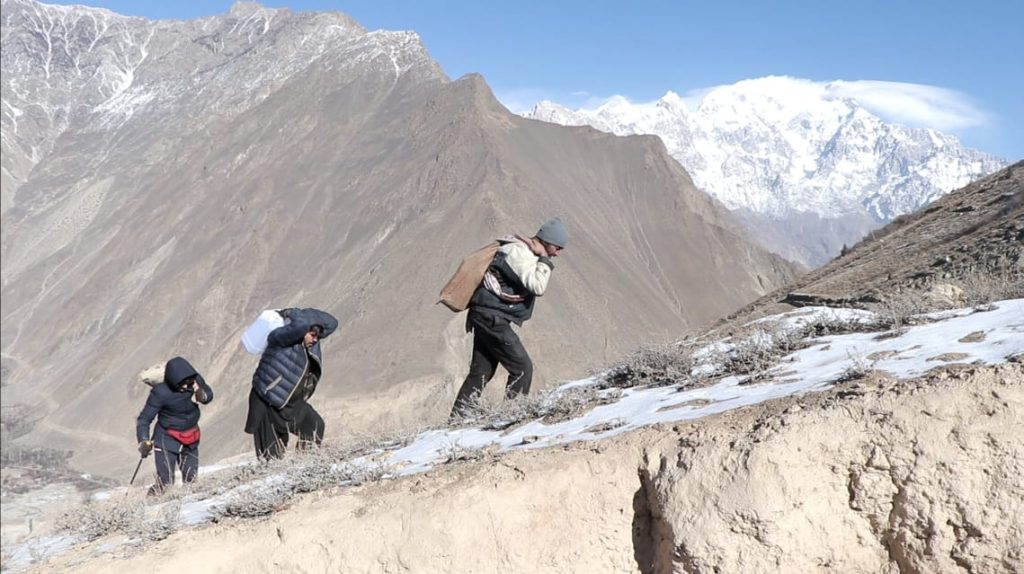
The practice of glacier grafting involves carrying a patch of a glacier weighing about 35 kilograms from each male and female glacier and then placing it in a cave or below a big rock in a region of high elevation. Apart from the ice, water is also added inside the cave along with charcoal and sawdust, and wheat husk. These things act as an insulator that protects the ice inside the cave from melting. While constructing a glacier special importance is given to the site. The site must be prone to the accumulation of snow by snowfall or avalanches. The ground must be cold enough to resist the melting of snow by heat. The wind around the site must also be slow to avoid melting.
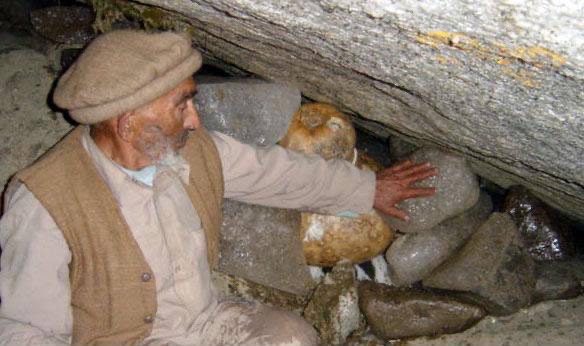
Marriage Customs
In Gilgit Baltistan, Glaciers have been historically classified as male and female glaciers. Both Balti and Shina, two major languages are spoken in Gilgit Baltistan, have specific words for different sexes of Glaciers. In Balti, the word ‘Mo-gang’ describes female glaciers, while ‘Po-gang’ is for male glaciers, whereas in Shina, ‘sonche gamuk’ is used for female glaciers; and ‘beero gamuk’ for the male glacier. According to local traditions, a ‘female glacier’ is a glacier that is growing and giving off a lot of water, it has a white or bluish color. A ‘male glacier’, apart from being black, and covered with soil and boulders, was characterized as giving little water and moving slowly. While tying the knots and grafting an artificial Glacier, ice belonging to both the sexes is required. A glacier starts growing only when it gives birth to a new cap of snow. To ‘impregnate’ the ‘female glacier’ one has to combine it with ice from a ‘male glacier’, which can be described as a ceremonial marriage.
A glacier grower from Kwardu explained how they collected male and female glaciers.
We were 12 people who collected mo-gang (female) from Shigar and then walked without break for 12 hours back to Kwardo. The other team went to the Gang singay glacier on the other side of Skardu town. There they got pogang (male) which was covered in soil and rocks.
Even the water used in the process should be from different sexes, male and female, called ‘po-shu’ and ‘mo-shu’. According to Balti oral traditions, the river Indus is the Male River and River Shyok is the Female River.
Traditionally men walk to the previously marked area of glacier growing sites in September and October with packs full of glacial ice weighing 300 kg and pots of Indus River water weighing 120kg. Other ingredients such as sawdust, wheat husk, charcoal, and salt are also carried along with the ice. The two types of glaciers from the naturally occurring site are taken up to the elevation of 4000m, where it is placed in a dug-out cave. Apart from the ice, they also place several gourds containing water in the interior of these caves. This water is usually brought to the site from rivers Shigar and Indus. After this, the process of insulating the ice begins by adding Charcoal and sawdust or wheat husk to the top. Then the cave is closed by piling up the rock at its entrance. During this process, prayers and sacrifices of animals by locals are organized as part of the ‘marriage of glaciers’ and they believe that it will give rise to a glacier within a span of ten to fifteen years. All this knowledge has been transferred from generation to generation orally.
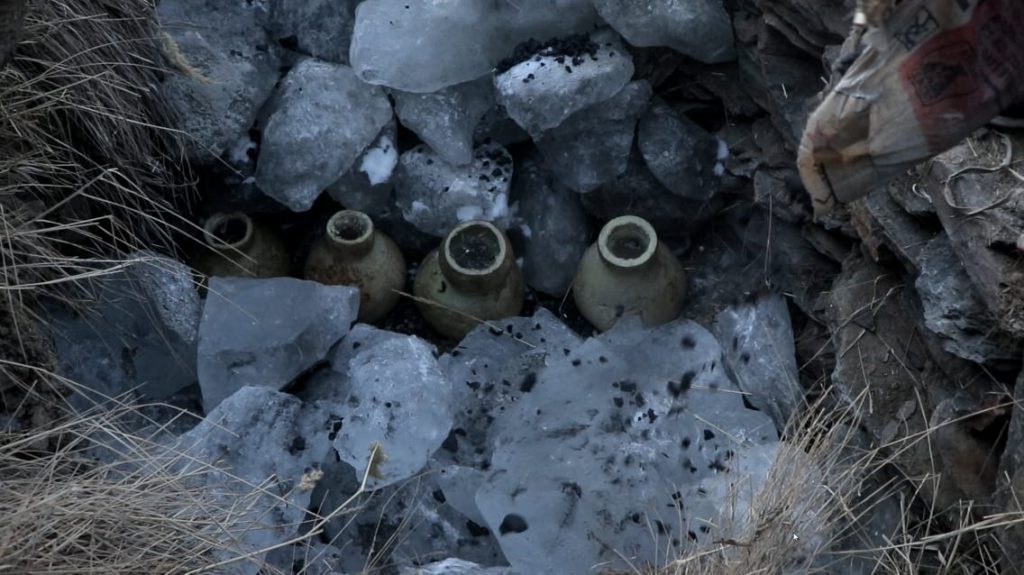
Success Stories
In the years 2000 and 2005 AKRSP started grafting glaciers in different areas of Baltistan with the help of locals. AKRSP has grafted glaciers in Pari, Tarkati, Ghawari, Hussainabad, Machulu, and Khapulu. Glaciers were grafted in 17 different sites in Baltistan.
Deputy regional program AKRSP, Sadaqat Hussain, who has actively participated in these glacier growing programs, explained
“Grafted glaciers proved to be successful in Machulu, Balghar, Hanjur, Pari, and Tassu. Experts of Glacier grafting said that it would take 50 years for the grafted glacier to start giving water, however, in Balghar the glacier started giving water just in 10 years”.
A glacier at the top of the mountain in the west of Skardu Valley which looks different from the neighboring snow over the mountain is one of the reared glaciers that still exists and provides sufficient water to the villages of western Skardu valley namely Chunda, Tandal, Kharbu, and Gamba Skardu. The name of the said glacier is “Senge Gang” the Lion-glacier.
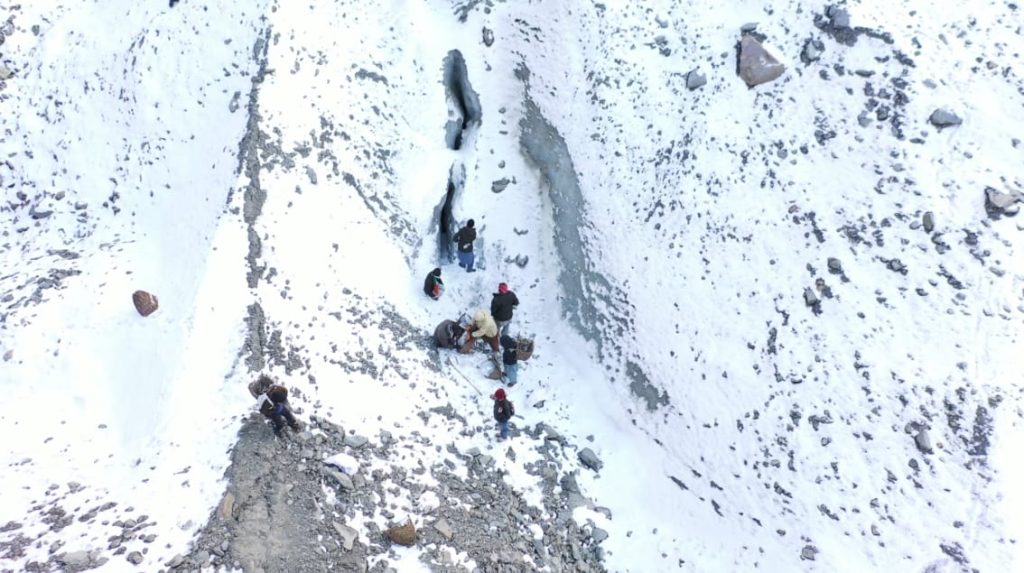
The science behind the process
The sites where glacier grafting was carried out were already prone to accumulation of snow by avalanche and snow slip. The presence of permo-frost (glacier that doesn’t grow) might add up to the accumulation of snow and help it grow further. Thus, glacier growing is conducted at places that are already exposed to ice accumulation and may explain why glacier growing is perceived to work. Sawdust and charcoal are used to insulate the ice by all of the glacier growers. Due to its thermal insulation property saw dusk saves the ice from melting during the extreme months of summer. The importance of atmospheric pressure was depicted through the fact that almost all these sites were at the elevation of 4000 meters or above.
Dr. Zakir of Baltistan University who is working on a pilot project to document and preserve this indigenous technique states that,
“Where hard ice mass exists, it starts accumulating by solidifying rainfall, humidity in clouds, and snow in winter. When the rate of accumulation becomes greater than the rate of melting and sublimation, the ice mass starts growing in size.”
Glacier Grafting and Water Management
Climate change is disrupting weather patterns, leading to extreme weather events, rapid depletion of available glaciers, unpredictable water availability, and exacerbating water scarcity. On the global scale, the warmer and drier climatic conditions have hampered agricultural production, leading to food insecurity, Pakistan is no exception. The northern region of the country where rainfall is very rare and agriculture is solely dependent on the melting of glaciers is mostly affected by global warming. According to a report, the total area under cultivation is roughly one percent of the total area of Gilgit-Baltistan. It constitutes 73,000 hectares that require a non-stop supply of water for irrigation purposes, while another 90,000 hectares in every district can be developed for cultivation purposes through sustained water provision. Therefore, the glacier grafting technique has the potential to transfer 90,000 hectares of land per district into arable land for food security. This conventional method of breeding male and female glaciers has been becoming successful in Gilgit-Baltistan, since 2001.
During an interview, a glacier grower from Kwardo explained:
“My glacier was about 500 meters further up, that’s why it benefits only 3 villages, while the old glacier benefits all. My glacier is in a bad place because the sun is hitting it all the time. The old glacier is only hit for two months in summer (for two hours a day) the rest of the year it is in the total shadow”
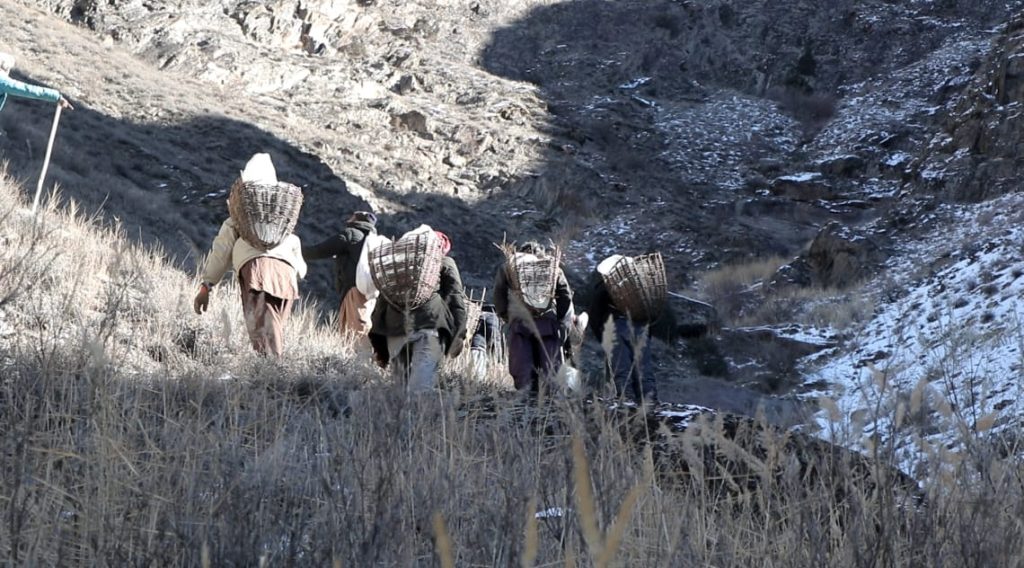
A way forward
Humans affect Glaciers as much as Glaciers affect us. We can either construct industries in abundance or increase the average temperature of the globe causing global warming or we can grow glaciers like the people of Gilgit Baltistan and enhance the freshwater reservoirs. Glacier growing in Baltistan and Gilgit is viewed as a possible method to apply in water management.
Climate change is “eating away Himalayan glaciers at a dramatic rate”, Glacier grafting is a possible sustainable solution. It is very encouraging that higher education institutes of the region, Karakoram International University and the University of Baltistan under the umbrella of the GLOF-II project are striving to carry forward this legacy of glacier grafting and also introduce new scientific techniques to mitigate the effects of climate change in Gilgit-Baltistan.
About Author
Imran Ali
The writer is the Founder & CEO of The Karakoram Magazine. Additionally, he is a nuclear scholar fellow at the Centre for Security Strategy and Policy Research (CSSPR) and can be reached at aleee.imran@gmail.com.
You may like
-


Rumi, the Moral Psychologist
-
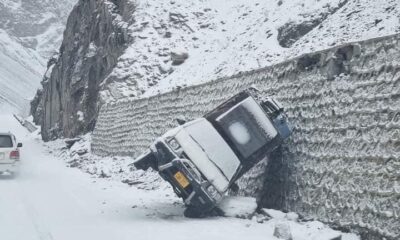

Poor Winter Maintenance of KKH Risks CPEC All-Weather Trade
-
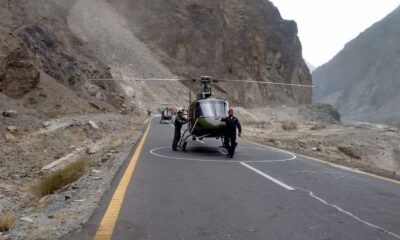

Pakistan Army Launches Rescue Operation, Missing Passengers in Deosai Found Safe
-


PM Shehbaz Sharif Visits Gilgit-Baltistan, Honors Martyrs, and Launches Development Projects
-
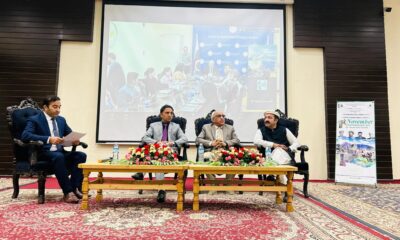

CISS-KIU Seminar: A Tribute to Gilgit-Baltistan’s Freedom Fighters of 1947
-


Gilgit-Baltistan Marks 77th Liberation Day from Dogra Rule
Climate
Karakoram International University Launches Climate Summer School Cohort 2024
Published
10 months agoon
September 18, 2024By
Imran Ali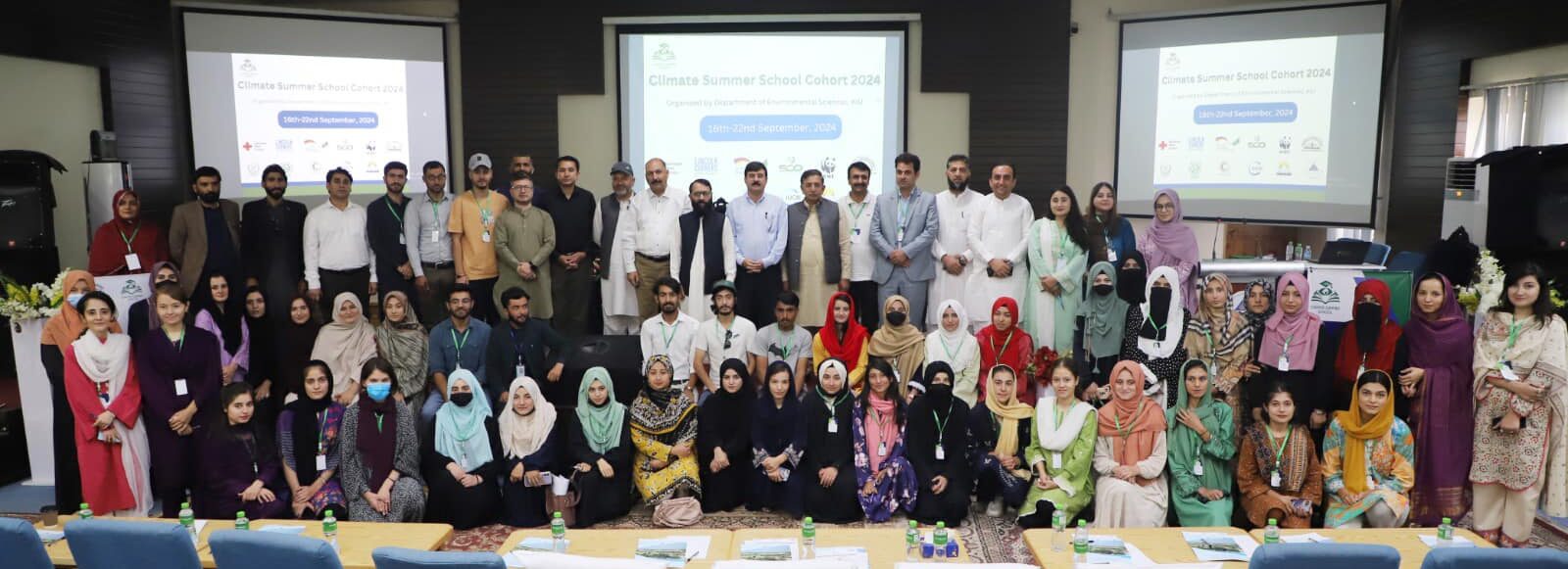
The Department of Environment at Karakoram International University (KIU) has successfully launched its inaugural Climate Summer School in 2024. This groundbreaking initiative is designed to address the region’s pressing issue of climate change.
The program has brought together individuals from regional partners and international organizations, fostering a collaborative approach to combating climate change. The Climate Summer School is set to become an annual event, providing a platform for knowledge sharing, capacity building, and innovation.
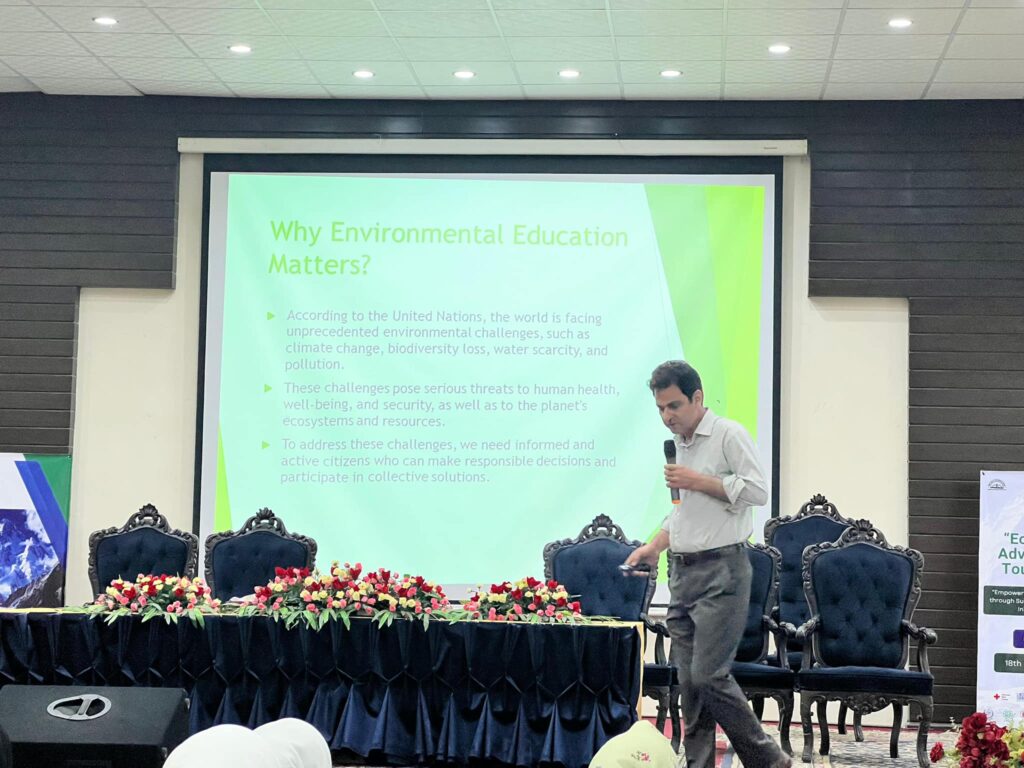
Dr. Shaukat Ali, Chairman of the Department of Environmental Sciences at KIU and the Climate Summer School, welcomed the participants during the orientation and inauguration. He emphasized that this event marks the beginning of an exciting journey into climate science, policy, and action. By bringing together brilliant minds, the program aims to explore innovative solutions to the pressing challenges of climate change, foster collaboration, critical thinking, and a commitment to building a sustainable future. We appreciate the participation and support of our partners and look forward to a fruitful collaboration.
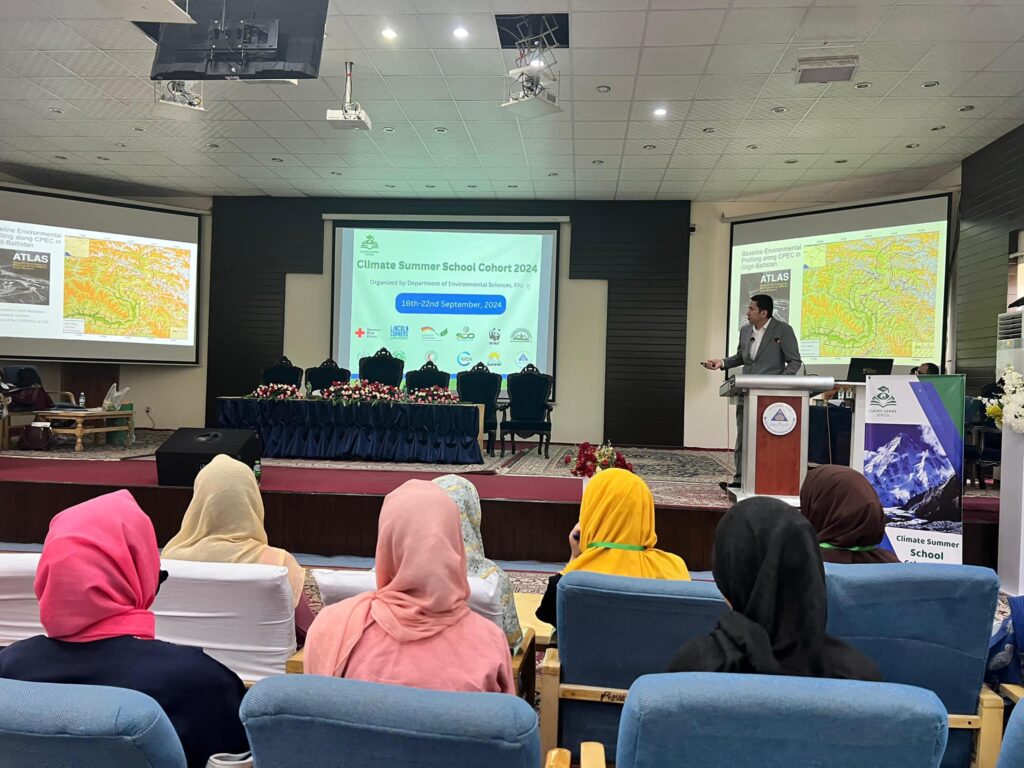
On the first day, Mr. Shehzad Hassan Shigri, Director of the Gilgit-Baltistan Environmental Protection Agency (GB-EPA), led a thematic session on “Eco and Adventure Tourism: Empowering Communities through Sustainable Tourism Initiatives.” This session explored the intersection of tourism and environmental stewardship, highlighting the potential of eco and adventure tourism to empower local communities. Mr. Shigri emphasized the importance of sustainable tourism practices that protect the region’s pristine landscapes while promoting inclusive growth and preserving cultural and environmental heritage.
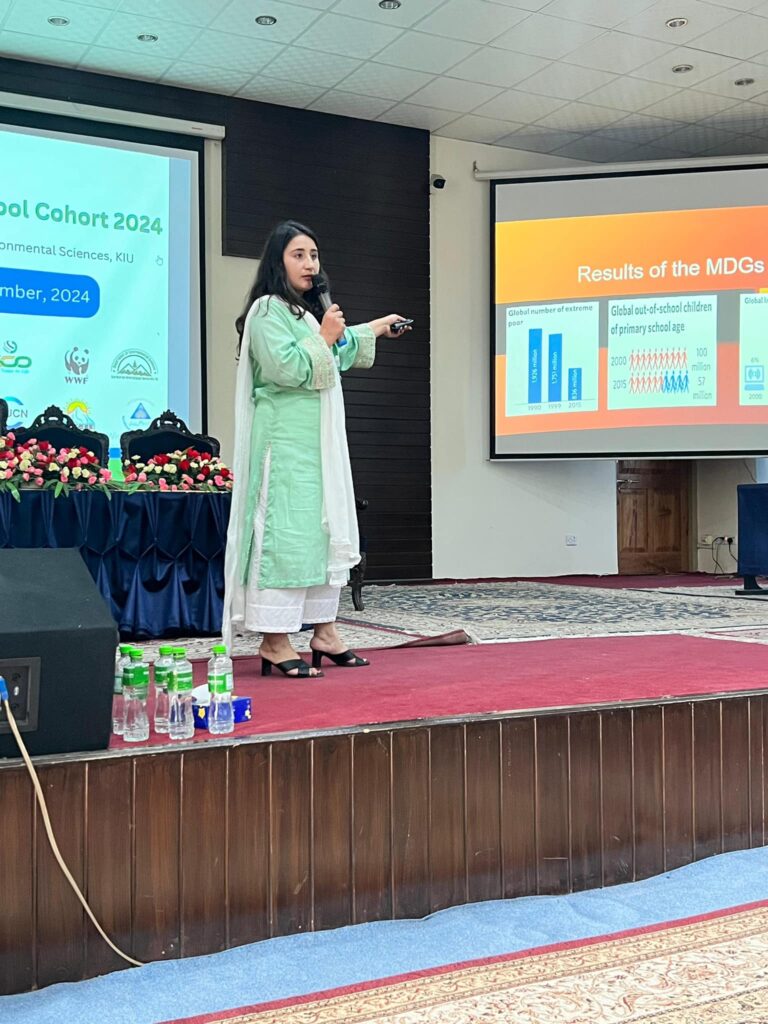
Miss Nelam Pari, Consultant for the Climate Summer School and SDGs Advocate, engaged participants in a session on sustainability, climate action, and the role of SDGs in driving global change. In an interview with The Nation, she explained that the immersive program will offer in-depth exploration of climate change, sustainability, and environmental stewardship through engaging workshops, interactive sessions, and expert discussions.
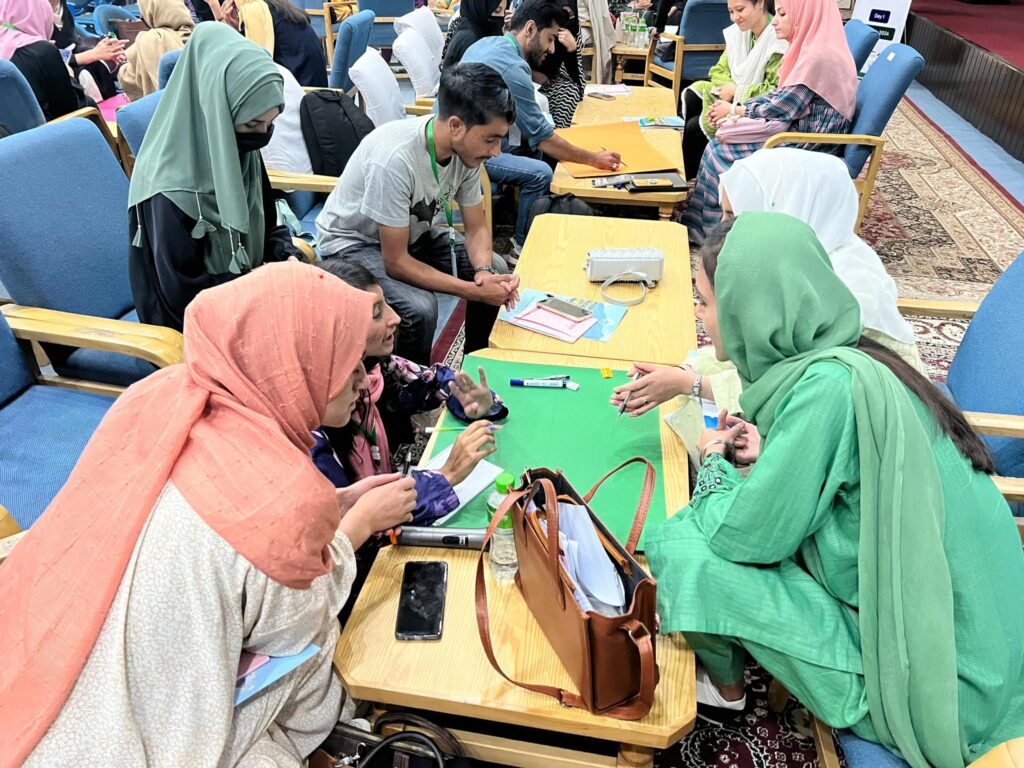
About Author
Imran Ali
The writer is the Founder & CEO of The Karakoram Magazine. Additionally, he is a nuclear scholar fellow at the Centre for Security Strategy and Policy Research (CSSPR) and can be reached at aleee.imran@gmail.com.
Climate
Eco-Friendly Alternatives: Gilgit-Baltistan’s Green Business Development Initiative
Published
1 year agoon
May 25, 2024By
Imran Ali
Plastic waste has become a global crisis, and Pakistan is no exception. According to a report by the United Nations Development Programme (UNDP) Pakistan is among the top countries in the world that are most affected by plastic pollution. Pakistan has one of the highest percentages of mismanaged plastic in South Asia.
More than 3.3 million tons of plastic is wasted each year in Pakistan. In Gilgit-Baltistan, plastic waste is a significant problem, especially in the tourism industry, where a huge number of tourists visit every year and often leave behind plastic waste. Besides this, plastic waste occupies a major portion of solid waste in GB due to its wide use. This waste is openly dumped or burned for heating purposes, especially in winter which is responsible for emissions of obnoxious gases, posing a threat to vegetation, human and animal health, and the environment as a whole. Gilgit city is grappling with a significant environmental and financial burden due to the excessive use of single-use plastic shopping bags. Every year, the city consumes an alarming 11 tons of these bags, costing an estimated 60 million rupees.
On a per-kilogram basis, these bags cost anywhere between 450 to 500 rupees, adding up to a staggering 4.95 million rupees in monthly consumption alone. Annually, the cost of these bags is a staggering 59.4 million rupees, which is roughly 60 million rupees.
But the financial burden is just the tip of the iceberg. The environmental cost of these bags is even more staggering. Approximately 20.46 million tons of these bags are discarded into the environment, causing severe damage to the ecosystem.
The ultimate fate of this huge chunk of plastic waste is “Bukhari” traditional heating stoves or open dumps in water channels, streets and open fields.
It’s time for us to come together and make a change by reducing the use of these harmful single-use plastic bags in Gilgit city and opting for more eco-friendly alternatives for a sustainable future.
The Role of EPA
But there is hope. Gilgit-Baltistan Environmental Protection Agency (EPA) in collaboration with Line departments, NGOs, Communities, and the private sector has taken a step forward to eliminate single-use plastic from the region under the project named “Phasing out Plastic Bags in Gilgit-Baltistan through Promotion of Smart Shopping Bags” by introducing the Green Businesses Development initiative. The aim of the project is to preserve the natural environment of GB by phasing-out polythene bags and by promoting local entrepreneurs to promote cloth, paper and other eco-friendly bags. In this regard, the ban on single-use plastic shopping bags has been implemented in Gilgit city from 1st January 2023. To maximize the social and environmental benefits of the project interventions, “Green Businesses” would be incubated by supporting existing entrepreneurs by providing interest-free loans. The initiative, which is currently in the implementation stage, aims to provide interest-free loans of up to PKR 96 million to local enterprises that will work to make Eco-friendly bags i.e., cloth, paper, and nonwoven bags. This initiative is not only a response to the plastic waste problem but also a response to the challenges posed by climate change in Gilgit-Baltistan.
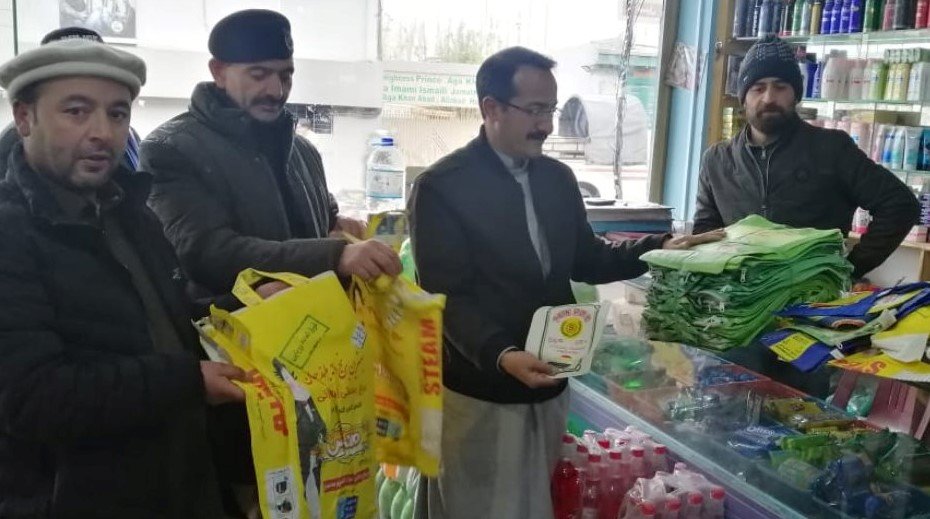
The Green Businesses initiative is a major step forward in the fight against plastic waste in Gilgit-Baltistan. Once the loan initiative is implemented, the local enterprises will be required to use eco-friendly materials, and also have to comply with the regulations set by GB-EPA in terms of waste management, energy consumption, and emissions. Furthermore, the initiative will also provide training to the enterprises for the implementation of circular economy principles and to promote sustainable production methods.

Say No to Single-Use Plastics: Switch to Reusable Alternatives
Plastic bags made from petroleum or natural gas are a major contributor to pollution and take hundreds of years to degrade. Non-woven bags, also known as reusable bags, are a sustainable alternative that are biodegradable, compostable, and made from recyclable materials like polypropylene. It is evident from the studies that non-woven bags consume less energy and materials and releases fewer greenhouse gases (GHG) than other types of shopping bags. Reusable plastics, like water bottles and food storage containers, have a lower impact on the environment than disposable plastics when used responsibly and recycled properly. To minimize the environmental impact of plastics, it’s important to reduce single-use plastics and promote reusable alternatives, as well as education on proper disposal and recycling.
A Circular Economy Approach Towards a Sustainable Gilgit-Baltistan
The use of plastic in Gilgit-Baltistan was almost non-existent before the 1990s. Instead, locals relied on traditional materials such as cloth or willow bags. Implementing a plastic ban in the region would have numerous benefits, both economically and environmentally. It would support local businesses by promoting the use of locally-made alternatives such as cloth or paper bags and encourage a circular economy. Additionally, it would save the region an estimated 60 million rupees that would otherwise be spent on importing plastic. The environmental benefits would also be substantial. With an average of .5 million tourists visiting Gilgit-Baltistan each year, if each visitor were to use just three plastic bags, that would amount to 1.5 million plastic bags ending up in the environment. By implementing a plastic ban and promoting eco-friendly alternatives, the local economy would be supported and the region would become more attractive to tourists. The Gilgit-Baltistan Environmental Protection Agency (EPA) is also taking steps to hold multinational companies accountable for plastic pollution and require them to give back to this initiative through Corporate Social Responsibility.
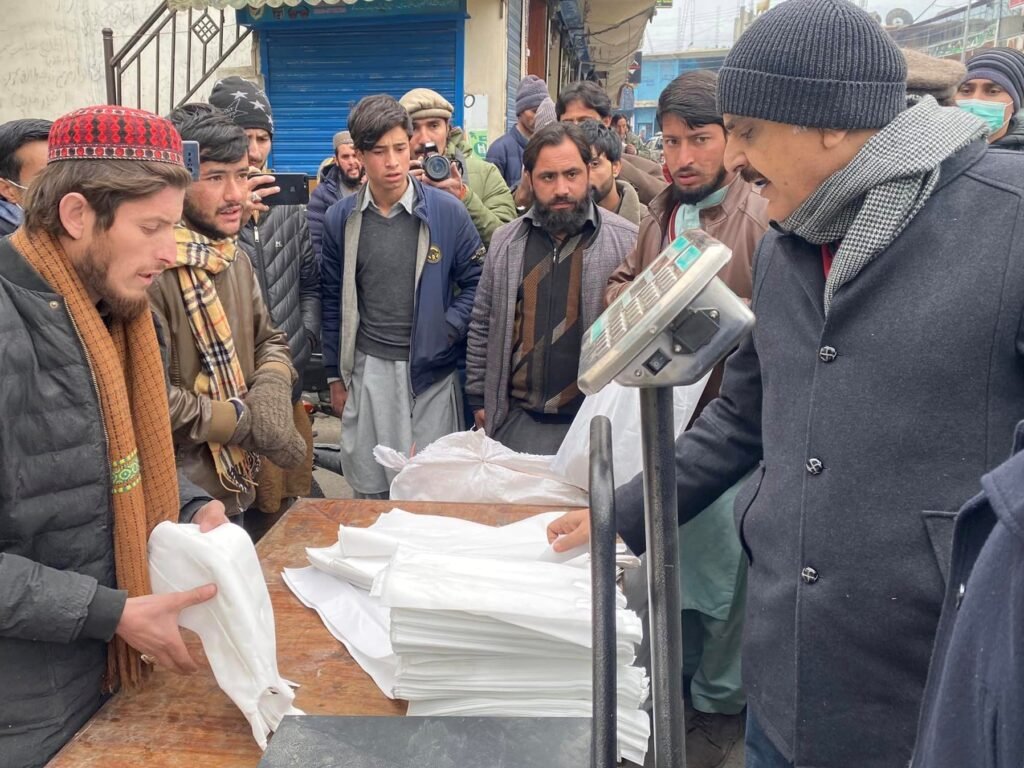
This initiative can prove to boost the concept of a circular economy within an otherwise unsustainable environment. Supported by the fact that the region of Gilgit-Baltistan does not encompass any manufacturing of plastic products, the amount of plastic found within the region is unreasonable. This concept of circular economy can prove to be beneficial for employment purposes across the region through the adoption of sustainable and environment friendly alternatives.
Furthermore, Gilgit-Baltistan receives more than its residential capacity of tourists within the span of a few months each year, thus bringing in a whole new hoard of plastic bags adding to the already humongous numbers. If sustainable solutions are adapted across the region, this issue can be fixed, however, for this to happen the Plastic Ban has to be implemented rigorously.
The circular economy approach promotes reusable materials, closing the loop on the use and disposal of plastic products. This model has been successful in many countries such as France, where a law was passed in 2016 that ban disposable plastic plates, cups, and cutlery. It also put into place an extended producer responsibility, obligating manufacturers to finance the collection and recycling of their products.
Conclusion
But the fight against plastic waste is not just the responsibility of local businesses. Each and every one of us has a role to play. By choosing to use reusable water bottles, shopping bags, and containers, we can reduce our own plastic waste. Supporting local businesses that use eco-friendly alternative options is also a great way to make a difference. By working together, we can build a cleaner and more sustainable future for Gilgit-Baltistan.
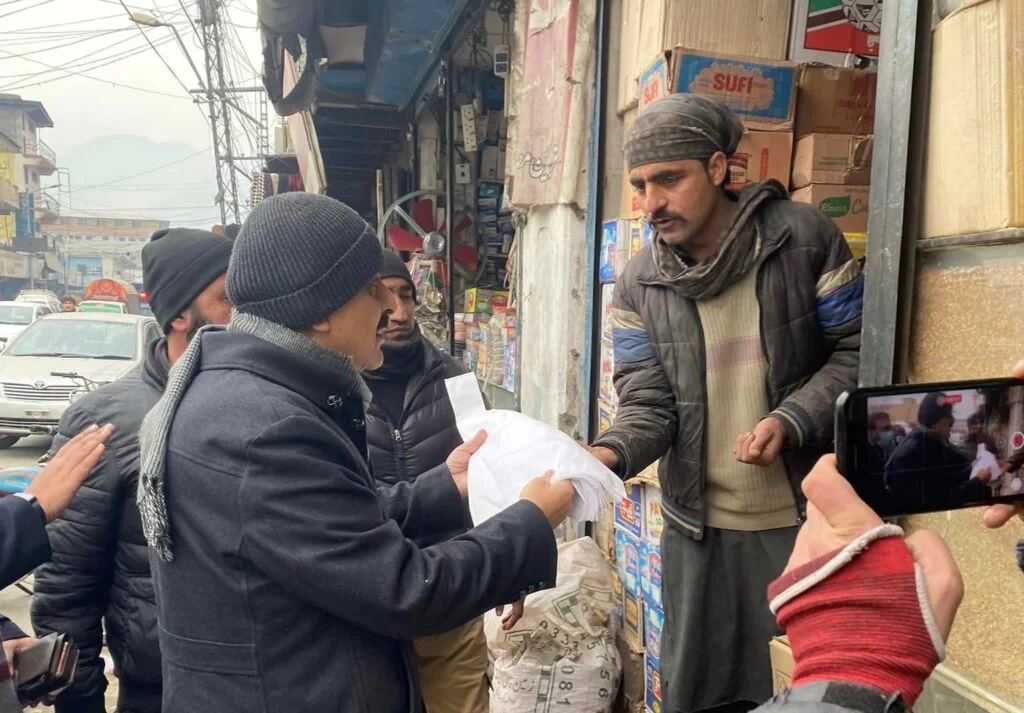
The Green Businesses initiative is an important step towards addressing the plastic waste complexity in Gilgit-Baltistan and addressing the challenges posed by climate change in the region. The initiative is currently in the implementation stage, and with the support of local businesses and the community, it has the potential to make a significant impact on reducing plastic waste and promoting sustainable practices. It’s important to keep in mind that this initiative is not a one-time solution, but a continuous effort that requires the participation and commitment of all sectors of society. With this initiative in place, we can work towards a greener and more sustainable Gilgit-Baltistan.
About Author
Imran Ali
The writer is the Founder & CEO of The Karakoram Magazine. Additionally, he is a nuclear scholar fellow at the Centre for Security Strategy and Policy Research (CSSPR) and can be reached at aleee.imran@gmail.com.
Climate
Climate Change Threatens Gilgit-Baltistan’s Ecosystem: A Wake-Up Call
Published
2 years agoon
July 13, 2023
As time passes, the threat of climate change is becoming visible day by day. The globe is witnessing harmful impacts, and developing counties face music more severely. Gilgit Baltistan is no exception. The region’s geography makes it more vulnerable to the disastrous effects of global warming. Gilgit Baltistan is home to the largest non-polar glaciers, including Siachen, Baltoro, and Hisper glaciers. Global warming is increasing the rate of melting glaciers, causing floods, and disastrous effects are more severe each year. Rapid climate change poses a significant threat to the region’s delicate ecosystem, thus affecting people’s normal lives. Climate change results in various adverse effects on the ecosystem of the region. The rising temperature disrupts the natural habitat of various plants and animals and affects the pattern of vegetation and water sources. The changing pattern, severe rainfall, and heat psychologically impact the region’s inhabitants, and people live in constant fear.
The region is known for its natural beauty: snow-capped mountains, lush green fields, crystal-clear streams, and eye-captivating lakes. Thus the habitat of the region is a source of tourism influx. However, changing weather patterns of weather is disrupting the tourism industry. Unpredictable and severe weather events, including heavy rainfall, floods, and land sliding, pose dangers to travelers, making them less appealing to tourists. Last year the Hassanabad bridge that connects Nagar and Hunza collapsed due to the glacier lake outburst flood (GLOF). This created a lot of trouble for the tourists and locals. Such incidents could result in heavy casualties, as happened in the Chamoli District of India, which took more than 200 lives. Thus the main source of income of the region, which is the tourism industry, could be affected badly in the future if the situation continues the same.
It is estimated that there are around 7000 glaciers in Pakistan, most of which are located in Gilgit Baltistan. Three of the World’s seven largest glaciers are sited in Gilgit Baltistan. Due to global warming, the rate of melting glaciers is increasing, causing floods and glacier lake outburst flooding(GLOF) threats. The whole GB has been identified as either a high or very high-risk region with respect to GLOF hazard. The head of the Pakistan Meteorological Department (PMD), Ghulam Rasool, mentioned in 2018 that the average temperature in the last 80 years in Gilgit Baltistan has increased by 1.4 degrees Celsius as compared to 0.6 degrees Celsius in the rest of the country. According to the Ministry of Climate, 3044 glacial lakes have been developed in Gilgit Baltistan and Khyber Pakhtunkhwa. 33 lakes have been identified as prone to hazardous glacial lake outburst flooding (GLOF). In a report jointly prepared by the Agha Khan Rural Support Program (AKRSP), National Disaster Management Authority(NDMA) and the Food and Agriculture Organization (FAO) mentioned that all three geographic zones of the district, located on the western edge of Gilgit Baltistan are prone to hydro-meteorological hazards during spring, summer, and winter. The report added, “Floods happen every year or every second year and are the main causes of socio-economic disruption in the area. Important sources for these floods are glaciers and lakes situated at the higher altitude alpine zones. These sources cause flooding due to heavy rains, thunderstorms, and snow melt,”. More than 7 million people are vulnerable to the threats of climate change in GB and KP.
This severe rainfall raises the risk of flash floods, devastatingly affecting communities and infrastructure. The natural habitat is affected badly, causing the endangerment of many species of the Northern areas, such as Himalayan Ibex, Markhor and Snow leopard. Floods threaten human lives and damage agricultural land, homes, and vital infrastructure such as roads and bridges, further disrupting the region’s development and stability. The last year saw flood disasters in the Ghizer district and some other regions. The outburst of Shisper Glacier in Hunza devastated lands, homes, farms, and infrastructure. Due to these losses, locals migrate to other cities in Pakistan.
Certain efforts are needed at both the government and individual levels to protect Gilgit Baltistan’s ecosystem and address the challenges caused by climate change. High authorities should develop and implement strategies for ecosystem restoration, sustainable land management, and biodiversity conservation. As tourism is the major source of income, the government should encourage responsible and sustainable tourism practices that minimize the ecological impacts. This includes educating tourists about the ecosystem’s fragility, promoting eco-friendly accommodations, and supporting local initiatives prioritizing conservation and community development. Since floods cause water shortages and draught situations, water management practices should be implemented to cope with changing water availability. Further, awareness campaigns should be conducted to educate local communities and tourists about climate change impacts, its consequences, and the importance of individual and collective action. Encourage behavioral changes that reduce carbon emissions and support conservation efforts. In addition, we should discourage deforestation and put effort into forestation and planting trees as much as possible. The billion tree Tsunami project of Imran Khan deserves appreciation, and the current governments should follow the same policies.
Climate change is a real threat. Still, many people in GB have no concerns over the intensity of the threat that awaits to show its more disastrous shape in the future. However, it is to be noted that the threat cannot be controlled if we leave all the burden on the government. Everyone must play their roles. We should encourage individuals, communities, and governments to work together to preserve the region’s natural beauty and protect its unique biodiversity. We must work with government authorities to raise awareness, implement sustainable practices, and support conservation efforts. We can protect Gilgit Baltistan’s ecosystem and preserve its natural beauty for future generations. Together, we can work towards a more sustainable and resilient future, ensuring that this precious region continues to thrive amidst the challenges posed by climate change. It is the situation of now or never to recognize the intensity of the situation before it’s too late.
About Author
Muhammad Sheryar
The writer is an Associate Editor at The Karakoram Magazine and the founding curator of Global Shapers Nagar Hub, located in the northern part of Pakistan. For the past three years, he has been dedicated to climate change advocacy and initiatives in the region. He can be reached at shahryarkhn27@gmail.com

Clean Gilgit-Baltistan Project by Nestlé Pakistan Reaches Askole – Zero Point to K2

Rumi, the Moral Psychologist

Poor Winter Maintenance of KKH Risks CPEC All-Weather Trade
Latest
-

 Tourism2 years ago
Tourism2 years ago15 Best Places to Visit in Skardu
-

 Arts, Culture & Heritage2 years ago
Arts, Culture & Heritage2 years agoTraditional women’s dresses of Gilgit-Baltistan
-

 Tourism2 years ago
Tourism2 years agoThe Ultimate Travel Guide to Gilgit-Baltistan: Land of the Mighty Mountains
-

 KIU Corner2 years ago
KIU Corner2 years agoA Guide to LMS KIU Student Login – KIU
-

 Current Affairs2 years ago
Current Affairs2 years agoStrategic Importance of the Wakhan Corridor
-
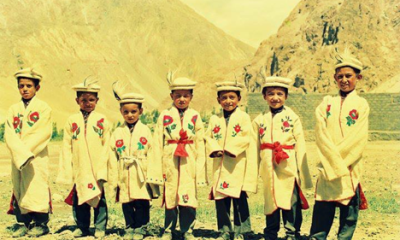
 Arts, Culture & Heritage2 years ago
Arts, Culture & Heritage2 years agoShuqa Simple but amazing winter clothing of Gilgit-Baltistan
-

 KIU Corner2 years ago
KIU Corner2 years agoEmbracing Challenges: Gul Rukhsar’s Remarkable Journey
-

 Opinion2 years ago
Opinion2 years agoThe Constitution of Pakistan: 50 Years of History, Significance, and Challenges


